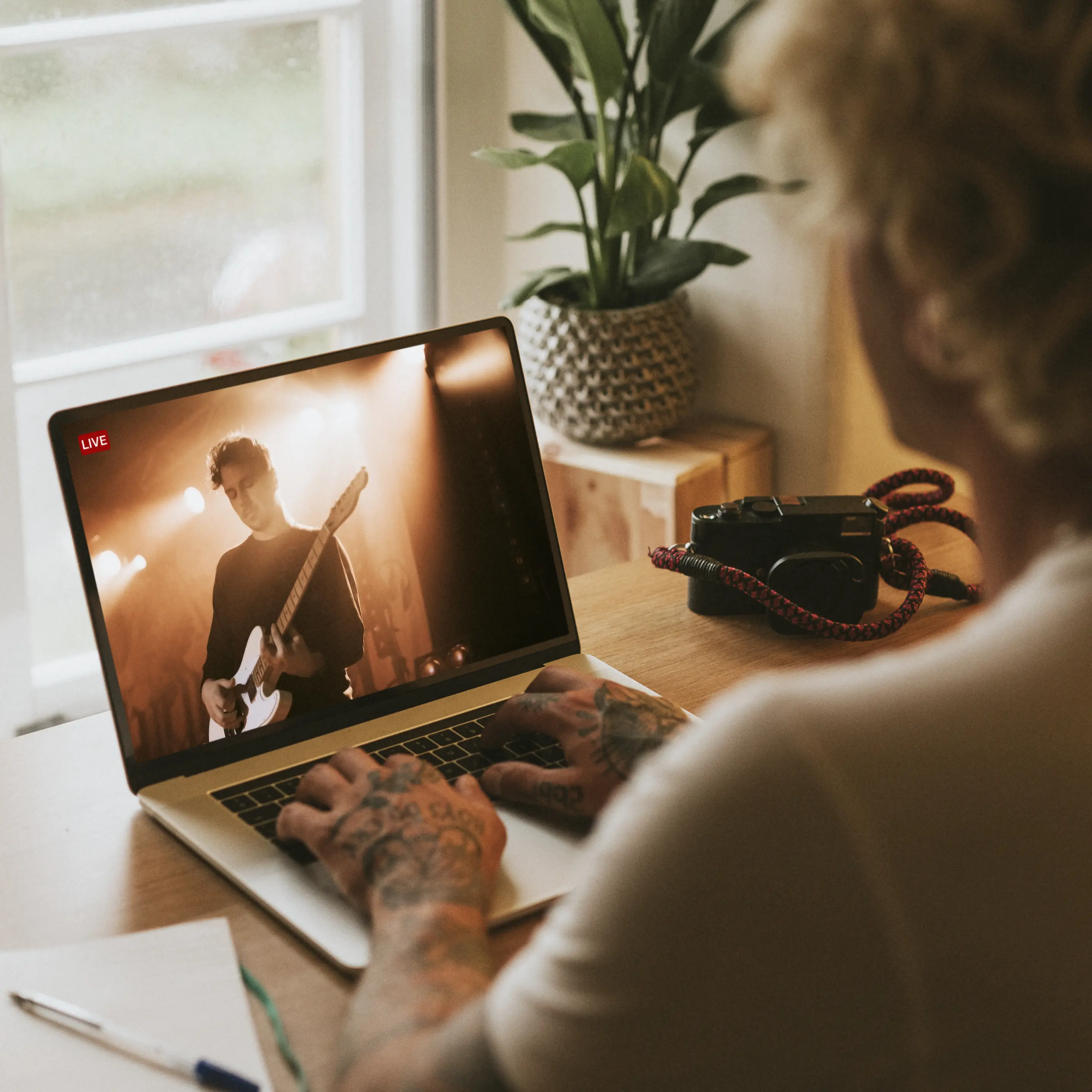The music industry is changing—fast.
More and more, fans expect intimate interactions with artists through games and personalized communication platforms. The traditional barriers that dictated when and how fans could interact with their favorite artists are increasingly falling. And at the heart of it all is a simple fact: The digital fan experience is here to stay and more important than ever.
Put simply, better fan-to-artists digital experiences and technology are driving new value in the internet economy.
Artists and music companies alike—not to mention artists who have started music companies—need to think rigorously about crafting the best fan experience possible with digital platforms. And those platforms need to work from day one. After all, just seconds can mean the difference between satisfied users or a bounce rate upwards of 40%.
That means starting with a product strategy that directs development, puts your end user first, and results in a final product that meets their—and not just stakeholders’—expectations.
From there, your next step is finding the right partner or building the right team to execute a digital product ready to stake a claim in a highly competitive market.
Finding a New Rhythm
Pandemic-era restrictions created a greater need for platforms that could provide amazing fan and artist experiences to replace in-person concerts.
Unsurprisingly, artists saw a major dip in revenue from in-person activities during the peak of the COVID-19 pandemic. In a typical year, live concerts and major city tours typically account for 60% of all revenue, but that income dropped dramatically in 2020 and 2021 amid public health restrictions around the globe. A report by UK Musi predicted that most artists would lose 60% of their normal income, and some would lose closer to 80%.
In response, artists shifted their attention to emerging communications platforms like interactive concert livestreaming, gaming, and personalized chat and video apps. These emerging platforms showed that fans were ready to engage in different and better ways. Livestreaming a concert on YouTube or Twitch would no longer be enough.
Fans discovered that they enjoyed interacting with other fans online, uploading their favorite pictures from past concerts, talking to their favorite artists directly through VIP chat, and entering opportunities to be featured on the backdrop of a live concert.
These up-close-and-virtual communication opportunities would have been more limited (if not impossible) for some fans to enjoy without digital platforms to facilitate them.
Social platforms that emphasized fan experience, unique digital interactions, and, most importantly, direct-to-artist access came out ahead.
Playing to the Crowd
Using digital spaces to connect fans and artists didn’t start during the pandemic. But, just as demand for video meeting and chat options took off, the demand for digital fan experiences ballooned amid COVID.
In-game concerts, for example, grew out of their pre-pandemic start to gain a strong foothold in 2020 and beyond. While Fortnite’s 2019 DJ Marsmello concert drew around 10 million fans, Travis Scott attracted more than 27 million in 2020 on the same platform. Lil Nas X’s concert on Roblox attracted even more fans, with 33 million total views.
But gaming platforms aren’t alone in finding new ways to reach fans. Startups like Veeps saw the demand for their platform explode at the start of the pandemic.
As a livestreaming platform, Veeps was already bringing musical performances to fans digitally before 2020. But the pandemic drove a new level of interest, and eventually drove Veeps to complete a full rewrite of their app from Ruby on Rails app to Elixir Liveview to keep up with the number of users trying to access their platform.
It’s important to note that digital platforms alone don’t carry value without a curated experience designed to anticipate needs of both artists and fans. It’s no longer sufficient to create a “nice looking” website or platform. In-game concerts build on the graphics and user interactions inherent to the platform, and startups like Veeps are building curated virtual experiences.
It’s about surprise and delight. It’s about making it easy and fun for fans to engage with artists and fellow fans. It’s about making sure artists get paid fast. It’s about enabling artists to manage their business operations with ease. It’s about being fully transparent with each party involved.
It’s hard work to craft an experience like this; an experience that truly differentiates. Only the best experience for artists and fans will win.
Crafting the Best Artist and Fan Experience
Digital products and streaming are increasingly shaping the future of the music industry. And for any organization in the music industry with a digital product, the pressure is on to produce a rock-solid offering from day one or risk being overshadowed by the competition.
Whether you’re starting from scratch or revamping an existing, underperforming product, product strategy can be your tool to gain proper alignment among stakeholders, overcome common issues, and gain a strong hold in a market as competitive as the music industry.
Once your strategy is in place, you can begin developing. That may mean turning to a trusted third party to bring your product to life—and handle everything from your strategy to your design and delivery—or handling it in-house.
Either way, your final product needs to be a powerful digital platform that can help reach—and increase—a fanbase and draw revenue along the way.
Anything else is just noise.


